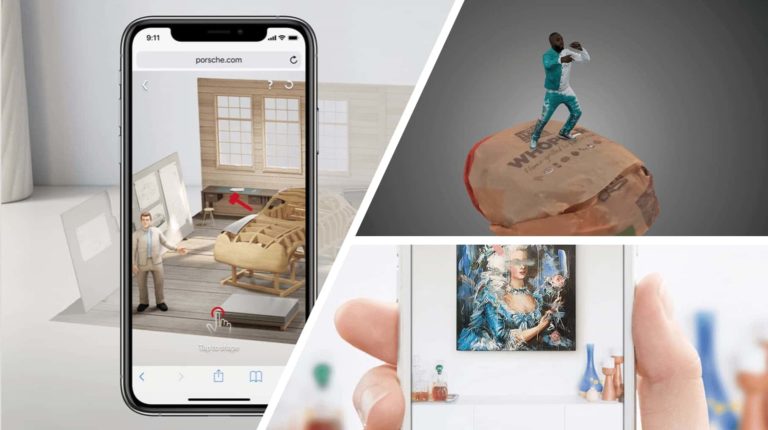
There’s growing sentiment in the mobile AR world that apps aren’t the optimal vessel. Yet the technology lives on a device where apps rule. 90 percent of mobile users’ time is spent in apps versus the browser. Can AR break that cycle? And if so, could web AR be the answer?
What is web AR? In short, it delivers AR experiences through the mobile browser. Advantages include dynamism for AR’s serendipity and short sessions, versus the friction of app stores and downloads. There, “activation energy” dampens already-challenged AR adoption.
For example, will consumers spend 90 seconds downloading an app for an experience that lasts 30 seconds? Consider this in light of dynamic AR activations within a store aisle or real-world social interaction. These scenarios happen fast and need AR formats that can be the same.
In these moments of dynamic activation, AR formats that can launch with minimal friction and maximum compatibility will gain the most traction. These factors will also grow in importance as brands and retailers increasingly plant AR activation markers on products and spaces.
But how will web AR reach that potential? What are best practices for web AR experiences and marketing campaigns? And who’s doing it right so far? Our research arm ARtillery Intelligence tackled these questions in its latest report, which we’ve excerpted below.
Web AR: Best Practices & Case Studies
By The Numbers
Picking up where we left off last week, web AR is advantaged by its sheer reach. Specifically, it’s compatible with more than 3.06 billion global smartphones – the greatest of any platform. Because it’s browser-based, it has broader compatibility with mobile hardware.
This scale is also owed to the work of web AR innovators like 8th Wall that have been able to get AR to work on commodity hardware and standard cameras. In fact, the above AR compatibility figure is based largely on the device types that 8th Wall has tested.
As for other platforms, Facebook has 1.63 billion AR-compatible smartphones, followed by ARkit (1.25 billion), TikTok (1.1 billion), ARCore (891 million), and Snapchat (515 million). When adding up and de-duplicating these figures, AR active users total about 802 million.
But despite its reach advantage, web AR has the least active users. This isn’t a mark against its quality, but a characteristic of its early stage. Social apps have a more established position through incubating AR and infusing it into already-popular activities like selfie sharing.
Mobile AR Users Approach 800 Million
Closing the Gap
Going deeper on Web AR’s early stage, the mobile web in general is more of a “wild west” environment. Apps are conversely seen as more user friendly and purpose-built — one reason they account for 90 percent of time spent on mobile devices. AR inherits these usage habits.
But for web AR, having the greatest reach and the least active use is positive in one sense: headroom. Web AR has the greatest growth potential of any mobile AR channel. As it continues to improve in functional capabilities and consumer acclimation, it could close that gap.
This is already happening, the latest evidence being 8th Wall’s Release 17. Among other things, it unlocks the capability for AR portals, which have lots of brand marketing implications. Before that, Release 16 upgraded positional tracking (SLAM) and frame rates.
Furthermore, the above AR market-sizing exercise reveals another key factor: fragmentation. Compared to the mature smartphone market that has two platforms, AR (and VR for that matter) have several, which could further compel web AR and its cross-device advantage.
How Do Mobile AR Platforms Stack Up?
Biggest Shell
To further compare mobile AR platforms in a data-backed way, how do they stack up in terms of consumers’ reported usage? ARtillery Intelligence’s recent survey findings – produced with consumer survey specialist Thrive Analytics – provide more color.
When asked what types of AR formats users have tried, the leading category was “AR as a feature” (ARaaF). These are AR experiences in existing (non-AR) apps. That includes many of the social AR platforms examined earlier including Facebook and Snapchat.
These ARaaF experiences benefit from piggybacking on established apps and experiences, such as social lenses. This will continue to be a strong delivery channel for AR, and is advisable for players who already have reached scale with their mobile apps.
Web AR meanwhile lingers at 17 percent of survey responses. That’s not surprising given its early stage, as noted. Indeed, web AR’s best days are ahead. Though its current active use is relatively low, its installed base is greatest… meaning it has the biggest shell to grow into.
We’ll pause there and return in a future installment for more web AR dynamics, strategies and case studies…

